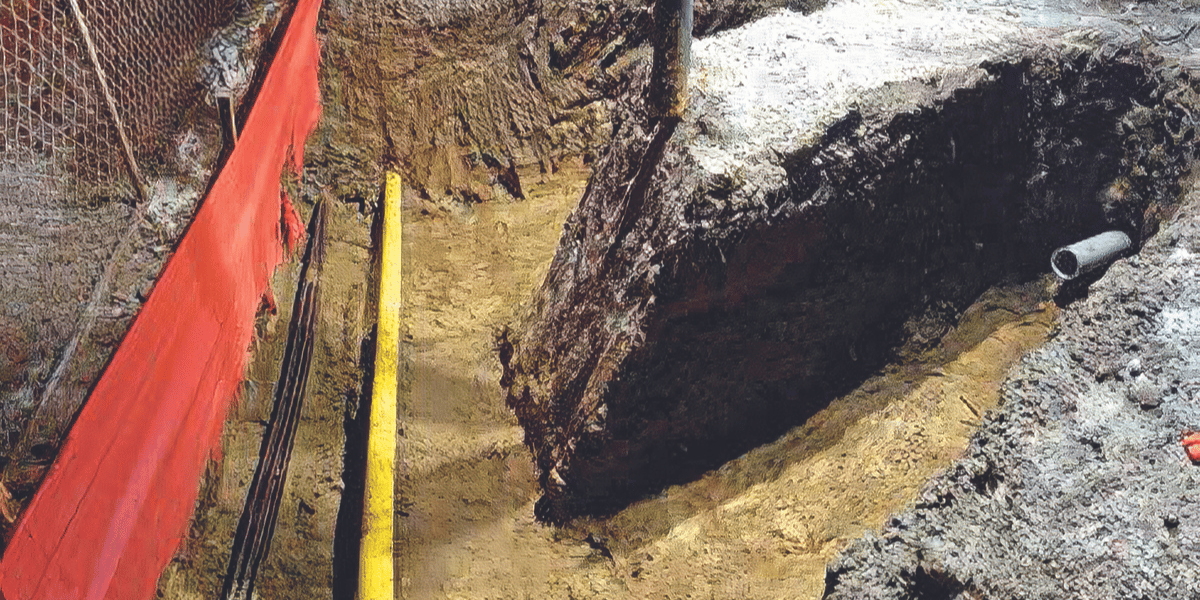
Being a hydro excavator for over nine years, I have worked with and alongside numerous utility facility owners, installers and maintenance companies. I have noticed a greater demand for hydro excavation than ever before, and the need is ever expanding. Over the 11 years my company has been in business in Minnesota, we have increased the number of trucks we send out every day from one truck in 2009 to over 50 trucks in our region. With the current population rising and the availability of new technology growing more rapidly than ever, there are more utilities going into the ground than anyone knows what to do with! So, what are the hardships we see daily in the underground utility world?
UNLOCATABLE UTILITIES
What are they, and how can we find them? An unlocatable utility is any utility or structure that exists underground where the location is not known and cannot be detected. Ground Penetrating Radar (GPR) is one of the first options available to try to locate the utility. However, GPR is usually more effective on shallower utilities, especially ones that are more conductive. Utilities such as terracotta pipe, also known as clay tile, is typically installed deeper and is nonconductive. A tracer wire is typically installed alongside non-conductive pipe and cable. An issue with tracer wire is that it becomes more brittle with age and there are opportunities for it to break or short out. It is in situations like these that hydro excavation comes in handy. As industry professionals, we utilize our past experiences on how these utilities are typically installed and use exploratory-safe digging techniques to locate and mark the utility. We work with the contractor to develop a plan on where to start digging, eliminate potential vacant areas and maximize our time on the job to find the utility.
ABANDONED UTILITIES
Abandoned utilities become more common every day because facility owners are having a hard time keeping up with the growth and maintenance of their utilities. There is so much demand to get newer and larger pipe and cable into the ground to keep the world moving and safe that they often do not have the time to remove existing cable or pipe that is being replaced. This can wreak havoc for contractors working on or around the utilities. Typically, there are no marks on the ground for these abandoned utilities and the contractor may find multiple sets when only one set is marked. In this circumstance, there is a stop work plan; sometimes it can take days to figure out how to proceed. Other times, the locator picks up the abandoned utility, assumes it is live, and unknowingly fails to mark the live utility. This is another way hydro excavation adds value. We can dig safely around these utilities to create a large enough hole for the facility owner to get down close enough to identify what the utilities are and which ones are live.
With the current population rising and the availability of new technology growing more rapidly than ever, there are more utilities going into the ground than anyone knows what to do with! So, what are the hardships we see daily in the underground utility world?
BENEFITS OF HYDRO EXCAVATION
Using a GPR locating device is a great ways to get a ballpark idea of where the utilities are located. Unfortunately, contractors are often in a very restricted and/or small area and their window of error is minimal. Often, locators can be off with their marks, sometimes 10-15 feet. This can happen for multiple reasons. This can put contractors in a very dangerous position and could cause utility damage, injury, or even death to workers. Having the locate company mark the utility and following up with verification potholing by a hydro vac can be the safest play out there.
There are several benefits for using hydro excavation in both pre-planning and during your project. Our contractors have found the most accurate way to get locations on the utility is by having us physically spot the utility. We can develop a plan with the engineers, project managers, and designers on how often to locate the utility laterally for the specific project. This gives everyone a concrete plan of the room they must work within for a damage-free excavation. In some instances, we have had to completely expose a utility to shift it out of the way so the project can be completed safely and efficiently.
The mapping of utilities is a big problem for all contractors. Mapping has been around since the beginning, but with the addition of so many utilities in the right-of-way, it has become a struggle just to find them or interpret them correctly. New resources to our utility industry have now allowed these maps to go digital, which has helped. The downside is that roads are still being built, widened, raised, and lowered regularly.
A lot of past mapping has been recorded off road centerlines, street intersections and multiple other reference points that are ever changing. Homeowners deciding to redo landscaping and changing the configuration of the lay of their land is another huge hurdle. Often there is no update to the records that exist when this happens, For the smart contractor, hydro excavation is becoming the go-to for working on and around utilities!
(This article previously ran in the 2021 dp-PRO Summer Issue.)
Jonnie Pangerl is Project Manager for Davids Hydro Vac (DHV) and a member of the Minnesota Underground Utilities Mapping Project Team chaired by Gopher State One Call.
“With the current population rising and the availability of new technology growing more rapidly than ever, there are more utilities going into the ground than anyone knows what to do with! So, what are the hardships we see daily in the underground utility world?”

![ESM Sidebar Ad[87] ESM Sidebar Ad[87]](https://excavationsafetyalliance.com/hubfs/ESM%20Sidebar%20Ad%5B87%5D.gif)



Comments